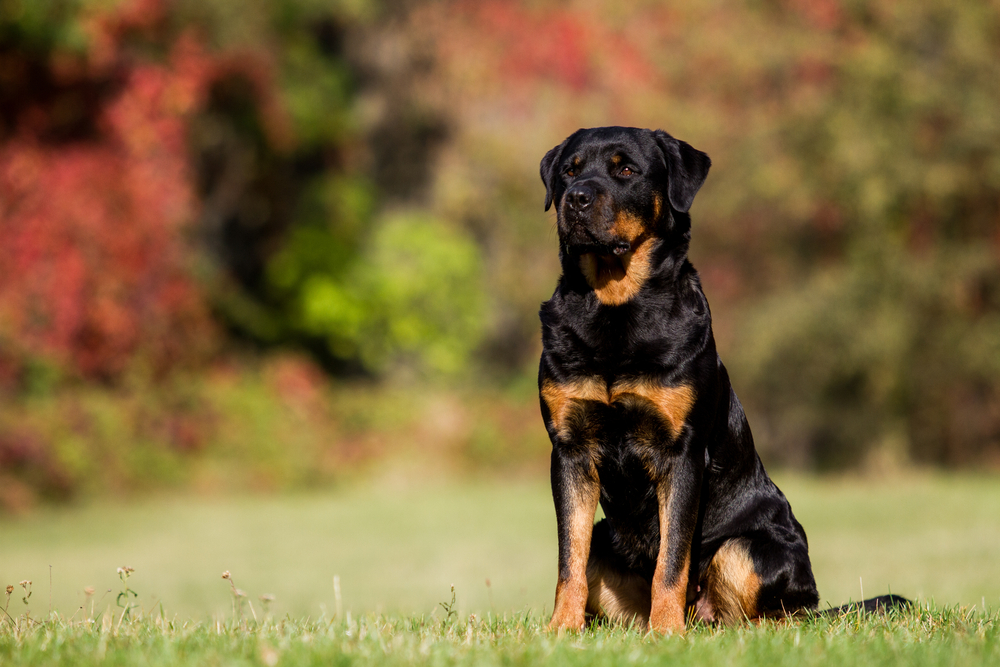
The Rottweiler is a strong, athletic breed. Photo: Aneta Jungerova/Shutterstock
Classification
The Rottweiler is classed as Group 6 (Utility) by the Australian National Kennel Council (ANKC).
History
The Rottweiler is considered to be one of the oldest dog breeds. Its origin goes back to Roman times. These dogs were kept as a herder or driving dogs. They marched over the Alps with the Roman legions, protecting the humans and driving their cattle.
In the region of Rottweil, these dogs met and mixed with the native dogs in a natural crossing. The main task of the Rottweiler now became the driving and guarding of the herds of cattle and the defence of their masters and their property. This breed acquired its name from the old free city of Rottweil and was known as the ‘Rottweil butcher’s dog’. The butchers bred this type of dog purely for performance and usefulness. In due course, a first-rate watch and driving dog evolved which could also be used as a draught dog. When, at the beginning of the twentieth century, various breeds were needed for police service, the Rottweiler was amongst those tested. It soon became evident that the breed was highly suitable for the tasks set by police service and therefore they were officially recognized as police dogs in 1910.
Records indicate that the first Rottweilers were introduced into Australia in 1962.
Physical characteristics of the Rottweiler
Rottweilers are powerful dogs with athletic, muscular bodies and large, broad heads. The ANKC describes the Rottweiler as a medium to large size, stalwart dog, neither heavy nor light and neither leggy nor weedy. His correctly proportioned, compact and powerful build leads to the conclusion of great strength, agility and endurance.
Size and weight of the Rottweiler
Technically a “medium / large” breed, according to the FCI standard the Rottweiler stands 61–69 cm (24–27 in) at the withers for males, 56–63 cm (22–25 in) for females, and the weight must be between 50 and 60 kg (110 and 132 lbs) for males and 35 and 48 kg (77 and 105 lbs) for females. Weight must be relative to height.
Colours of the Rottweiler
The Rottweiler appears in black with clearly defined markings of a rich tan on the cheeks, muzzle, throat, chest and legs, as well as over both eyes and under the base of the tail.
Traditionally, tail docking was performed when the puppies were newly born within days. This was prior to their neurological development and caused no harm or distress to the puppies. If a tail was docked at an older age, this is no longer referred to as “docking”, but an amputation. All forms of docking and amputation are now prohibited by law in NSW for routine, prophylactic or cosmetic reasons, and no ethical breeder or vet will perform this surgery.
Personality traits of the Rottweiler
The ANKC described the temperament as being good-natured, placid in basic disposition and fond of children, very devoted, obedient, biddable and eager to work. His appearance is natural and rustic, his behaviour self-assured, steady and fearless. He reacts to his surroundings with great alertness.
As with all dog breeds, aggression in a Rottweiler can be the result of poor breeding, cruel handling, and inappropriate training and poor socialisation.
An American Kennel Club 2008 study surveying breed club members found that while Rottweilers were average in aggressiveness (bites or bite attempts) towards owners and other dogs, it indicated they tend to be more aggressive than average toward strangers. This aggression appears correlated with watchdog and territorial instincts.
Note: All dogs are individuals. While there is a great difference between dog breeds there is also a difference in temperament within breeds. Temperament is affected by a number of factors, including heredity, training, and socialisation.
Care and Exercise for Rottweiler
Diet – How much your adult dog eats depends on his size, age, build, metabolism, and activity level. The quality of dog food you buy also makes a difference–the better the dog food, the further it will go toward nourishing your dog and increase your dog’s longevity. Discuss with your veterinarian and a responsible breeder about the best diet that is appropriate for a Rottweiler’s life stage from puppy to adult to senior. Clean, fresh water should be available at all times.
If overfed or under-exercised, Rottweilers are prone to obesity. Some of the consequences of obesity can be very serious, including arthritis, breathing difficulties, diabetes, heart failure, reproductive problems, skin disease, reduced resistance to disease and overheating caused by the thick jacket of fat under the skin.
Grooming – One of the easiest breeds to maintain, give them a good brush down regularly with a rubber glove during the moulting seasons and this will suffice.
Shedding – The Rottweiler is a double-coated breed, with a medium length outer coat and a soft downy undercoat. They do shed, more than one would think by looking at their appearance. The amount of shedding will vary with climatic conditions. They generally tend to “blow out” their
undercoats twice a year, in spring and autumn.
Exercise and Games – Rotties need exercise and plenty of it! Two walks a day for a start. They love to run through woods and in the open countryside with no desire to wander far from their owners. They adore swimming and will quite happily run alongside a bicycle. Do be careful though when they are running off the lead to ensure their safety.
Training for the Rottweiler
While dog training is imperative for the development of an acceptable temperament and socialisation skills, it’s also a stimulating and exciting pastime for this incredibly trainable dog.
Dog training is a great way to bond with your dog. Start training your puppy early using positive reinforcement dog training methods. Socialisation with gradual introductions to dogs, people, other animals and things is essential.
Health issues in the Rottweiler
A healthy Rottweiler has a lifespan of 8 – 10 years. This breed is known for a number of health issues including the following:
- Cancer (all kinds, but especially bone cancer) kills nearly half of all Rottweilers.
- Orthopedic diseases are rampant in Rottweilers: hip dysplasia (21% affected), elbow dysplasia (39% affected), osteochondritis, cruciate ligament rupture – all of which cause lameness and pain and can require expensive surgery.
- One of every four Rottweilers has an inherited eye disease, some of which cause blindness.
- Two different heart diseases are serious problems in Rottweilers.
- Colitis (inflammatory bowel disease) can cause chronic diarrhoea.
- Epilepsy is a concern, as is blood-clotting disease.
- Rottweilers are at high risk for an emergency gastrointestinal syndrome called bloat, which can kill a dog within hours.
- Rottweiler puppies inherit weak immune systems, making them more susceptible to parvovirus/coronavirus than most other breeds.
- Juvenile Laryngeal Paralysis Polyneuropathy
Talk to a veterinarian about health issues for this breed.
Note: While good breeders cannot guarantee the health of their pups, they will utilise genetic testing of their breeding stock to reduce the likelihood of inherited disorders in their puppies.
Suitability of the Rottweiler as a pet
The Rottweiler is a large, powerful dog and along with ownership comes much responsibility.
The Rottweiler is a ‘people’ dog but it is not for the first time dog owner. As a pet, this breed will suit active families with older children who can provide lots of companionship and commitment to exercise and ongoing training and/or dog sports for mental stimulation and well-being.
The Rottweiler is a working breed that needs plenty of exercise. To leave A Rottweiler alone in a backyard for long periods without enrichment for mental stimulation is just asking for trouble. When bored or frustrated, they will find something to keep themselves amused this is usually something undesirable such excessive chewing, digging, barking and pulling clothes off the line.
Because of their large size and inherent desire to “herd”, Rottweilers should always be supervised around children. A minor “bump” can cause serious injury to a small child.
Never leave a puppy or adult dog alone with your young child! If you are unable to supervise, then separate your pup and child. Crate training your puppy to give him a safe and fun space to be on his own for short periods is recommended.
Rottweiler adoption in Australia
Rottweiler rescue South Australia
More details on the Rottweiler dog breed
Australian National Kennel Council
National Rottweiler Council of Australia
Rottweiler Club of South Australia
International Federation of Rottweiler Friends


